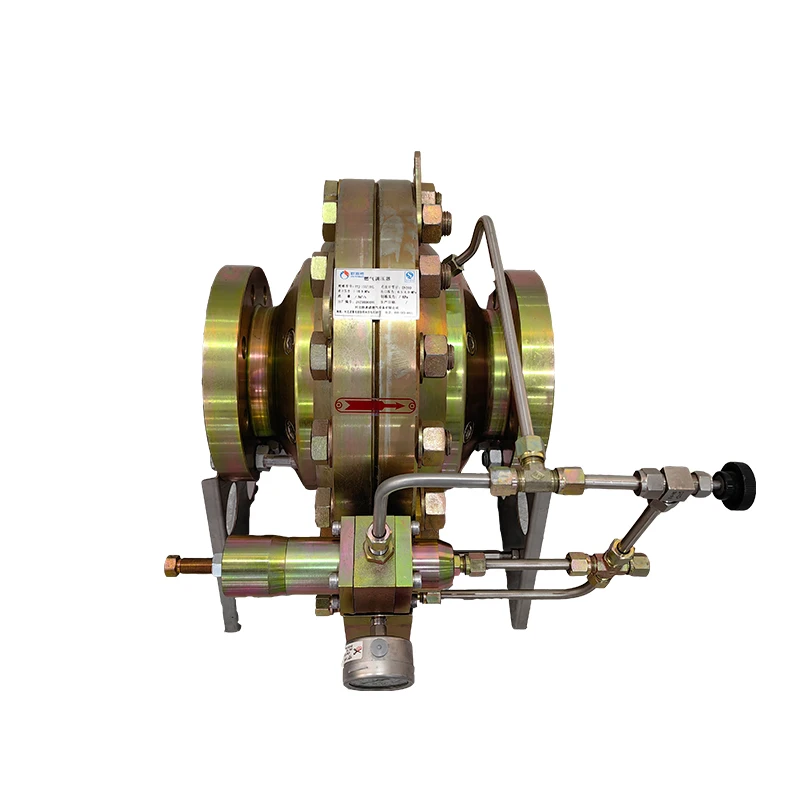
Dec . 03, 2024 23:25
Back to list
صمام كهربائي
Understanding Electric Valves A Comprehensive Overview
Electric valves play a pivotal role in numerous industrial applications, providing precise control over fluid and gas flow. These devices, which combine mechanical and electrical components, have gained popularity due to their efficiency, reliability, and ease of integration into automated systems. This article delves into the workings, types, advantages, and applications of electric valves.
What is an Electric Valve?
An electric valve is a type of valve that uses an electric actuator to control its operation. Unlike manual valves that require physical force to be opened or closed, electric valves can be operated remotely or automatically, making them essential for modern industrial processes. These valves can handle a variety of fluids, including water, oil, and gases, and are used in applications ranging from water treatment facilities to automotive systems.
How Do Electric Valves Work?
Electric valves function through an actuator that is powered by electricity. The actuator receives a signal from a control system, indicating whether to open, close, or modulate the valve position. This process can be managed through various control protocols, including simple on/off controls or more complex modulating controls that adjust the valve's position based on feedback from sensors in the system.
The actuator typically utilizes a powerful motor coupled with gears to convert the rotational movement of the motor into linear movement to operate the valve. Electric valves can be designed as either normally closed or normally open, meaning they can hold the flow either off or on when powered down, providing additional safety in many applications.
Types of Electric Valves
There are several types of electric valves, each suited for different applications
1. Solenoid Valves These are electromechanical devices that use a solenoid coil to move a plunger or armature that opens or closes the valve. They are ideal for applications requiring quick response times.
2. Electric Actuated Ball Valves These valves use a ball with a hole in the center to control flow. The electric actuator turns the ball to either allow or prevent fluid from passing through.
3. Butterfly Valves Butterfly valves use a rotating disc to regulate flow. The electric actuator rotates the disc 90 degrees to open or close the valve. They are often used in large diameter pipes.
.
Advantages of Electric Valves
صمام كهربائي

Electric valves offer numerous benefits that make them an integral part of modern industrial automation
- Precision Control Electric valves allow for accurate flow adjustments, which is crucial in processes that require tight regulation of fluid or gas flow.
- Remote Operation They can be operated from a distance, which is particularly beneficial in hazardous environments or systems that are hard to access physically.
- Efficiency By minimizing the need for manual operation, electric valves enhance the efficiency of processes, reducing labor costs and the potential for human error.
- Integration with Control Systems Electric valves can be easily integrated with sensors, PLCs (Programmable Logic Controllers), and SCADA (Supervisory Control and Data Acquisition) systems, enabling automated control and data logging.
Applications of Electric Valves
Electric valves are widely used across various industries, including
- Water and Wastewater Treatment In these facilities, electric valves regulate the flow of water and chemicals, ensuring optimal treatment operations.
- Oil and Gas Electric valves control the flow of oil and gas in pipelines and distribution systems, enhancing safety and operational efficiency.
- Manufacturing Many manufacturing processes rely on electric valves to control the flow of materials, maintaining consistent quality and process efficiency.
- HVAC Systems In heating, ventilation, and air conditioning systems, electric valves regulate the flow of refrigerants and other fluids, contributing to energy efficiency.
Conclusion
Electric valves represent a critical component in the automated control of fluid flow across various sectors. Their ability to provide precision, efficiency, and safety makes them indispensable in modern industrial applications. As industries continue to embrace automation, the demand for electric valves is likely to grow, leading to advancements in technology and design that will further enhance their utility. Understanding these devices' functionality and applications can aid engineers and technicians in making informed decisions about system design and maintenance.
Latest news
-
Safety Valve Spring-Loaded Design Overpressure ProtectionNewsJul.25,2025
-
Precision Voltage Regulator AC5 Accuracy Grade PerformanceNewsJul.25,2025
-
Natural Gas Pressure Regulating Skid Industrial Pipeline ApplicationsNewsJul.25,2025
-
Natural Gas Filter Stainless Steel Mesh Element DesignNewsJul.25,2025
-
Gas Pressure Regulator Valve Direct-Acting Spring-Loaded DesignNewsJul.25,2025
-
Decompression Equipment Multi-Stage Heat Exchange System DesignNewsJul.25,2025

